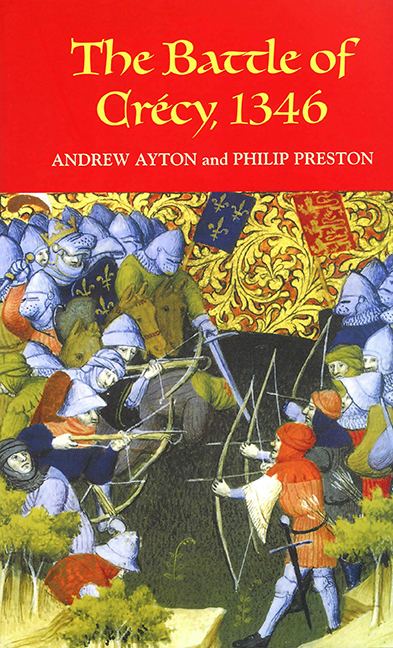3 - The Traditional Battlefield of Crécy
from The Battle
Published online by Cambridge University Press: 25 October 2017
Summary
The precise geographical placement of many battlefields is anchored by tradition rather than established fact, there being no more than anecdotal evidence, and perhaps an association with existing place names, to ‘authenticate’ their location. Such is the case with the traditional site of the battle of Crécy. That the battle certainly occurred close by Crécy is supported not only by the adoption of the name of the village, but also by accounts and letters written very shortly after the battle. However, attempts through documentary research to pinpoint the battlefield run headlong into the vagaries of chroniclers who offer no precision; and, as we shall see later in this chapter, neither such references as do exist, nor the small amount of archaeological research that has been undertaken, do much to add or subtract from the likelihood that the traditional site is indeed where the actual battle took place. In the absence of hard evidence, therefore, tradition remains the compulsive indicator, and those who have hitherto offered an interpretation of the battle have perhaps understandably found no need, or indeed no means, to challenge the belief that tradition is a continuum of the truth. As a result, the most respected accounts of the battle that we have refer generally to a landscape and topography that we see today. Indeed, the landscape and topography are essential ingredients in these historians’ military analyses, in their telling of the story of the battle of Crécy. However, a recent and more detailed look at the traditional battlefield suggests that at least some of these interpretations are not comfortably consistent with the existing topography. It is not the purpose of the present author to challenge the authenticity of the traditional site, nor to propose that the battle was fought elsewhere. It is, however, his intention to identify physical features of the battlefield that deserve specific – and in some cases perhaps revised – military explanations as to how the battle was arranged and fought.
The potential influence of a battlefield on the strategy, tactics and course of a battle, and thereafter on history itself, is emphatic. Just as military commanders consider the selection of a battle ground of primary importance, so military historians who follow place equal importance on these choices in their interpretation and analysis of warfare.
- Type
- Chapter
- Information
- The Battle of Crécy, 1346 , pp. 109 - 138Publisher: Boydell & BrewerPrint publication year: 2005

